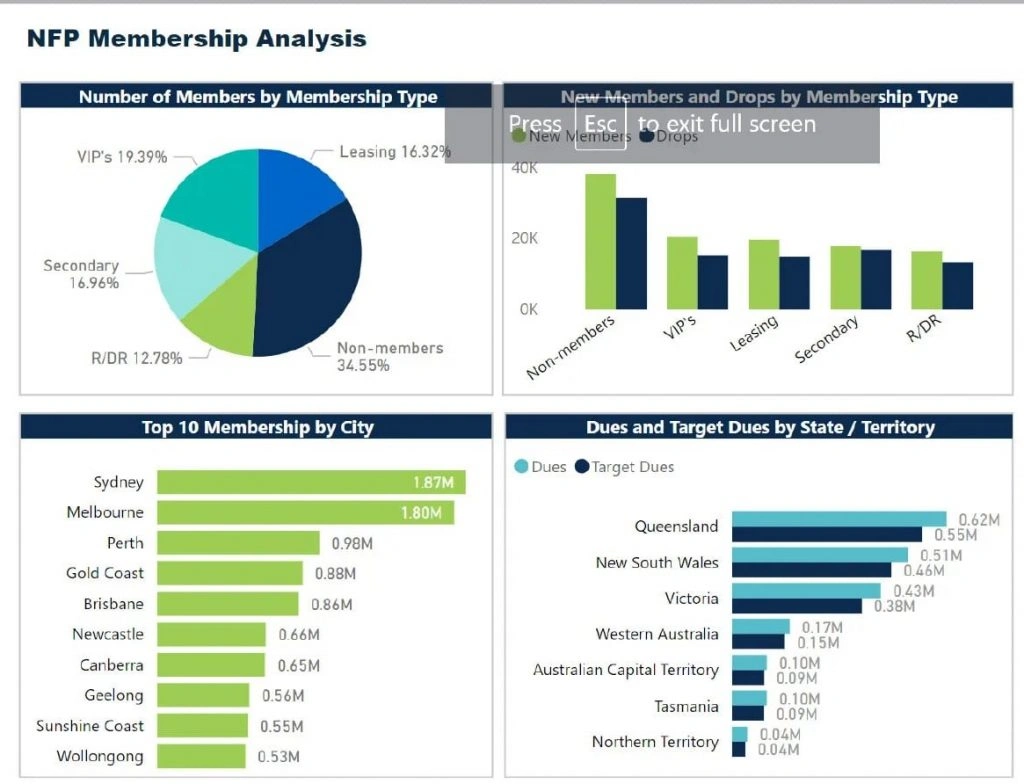Companies worldwide have started embracing corporate philanthropy programs. This creates excellent opportunities for nonprofits to benefit from business support. Over 26 million people work for companies with matching gift programs. These corporate partnerships could become a valuable source of support for your organization.
Many nonprofits now look beyond uncertain government funding. Building stronger revenue through business partnerships has become crucial. The benefits extend far beyond money – your organization can gain volunteers, board leaders, and enhanced credibility.
Your organization can thrive through corporate partnerships, particularly when budget limits hold you back. These alliances help maintain your nonprofit’s relevance even as donors become more careful with their spending. Socially aware consumers want to see positive change. Your partnership with a company that shares your values shows your dedication to common goals.
This piece will show you how to build and maintain meaningful corporate partnerships. You’ll learn to find the right partners who share your values, create compelling proposals, and track partnership results. These skills will help you turn business relationships into powerful tools that advance your mission.
Identify the Right Corporate Partners

Image Source: Dreamstime.com
A strategic plan beats sending random requests to every business when searching for corporate partners. The United States has over 32.5 million businesses, so you need a targeted approach to find those who will support your cause.
Define your nonprofit’s needs and goals
Success with corporate partners starts with a clear outline of what you want to achieve. You should think over whether you need:
- Financial support – Direct funding for programs or operations
- In-kind donations – Non-monetary goods and services such as event space, catering, or equipment
- Media sponsorships – Help with promoting your organization through various channels
Your mission does more than sit on your website – it guides your partnership decisions. Your organization’s core strengths will boost your position when you approach businesses. Review your key advantages – you might have an impressive donor base or exceptional community reach.
Look for shared values and missions
Strong corporate partnerships depend on how well your organization’s mission lines up with a company’s goals. Start your partner search locally, then expand based on how well missions match. Nonprofits must review a corporate sponsor’s ethical values before forming any partnership.
Your research should focus on companies that have:
- Backed causes like yours before
- 5-year-old corporate social responsibility (CSR) initiatives
- Published values that match your mission
Look for industries and sectors that naturally fit your nonprofit’s work. To name just one example, health-focused organizations should explore partnerships with pharmaceutical or medical device companies. This creates a foundation for partnerships that benefit everyone.
Use your network to find warm leads
Your existing connections work better than cold calling to identify potential corporate partners. Here’s the order to follow, from most promising to least:
- Personal connections – Friends and family at companies that might be interested
- Board member networks – Your board brings powerful corporate connections
- Staff relationships – Companies with CSR policies welcome employee suggestions
- Current supporters – Check your donor base for repeated company names
Your current supporters can open doors to corporate funding. Companies prefer supporting causes where their employees already participate. Collecting employment details from donors helps find potential champions inside corporations.
LinkedIn works great for mapping connections to target companies. Look for team members at your target companies and check for first or second-degree connections who can aid introductions. Note that warm introductions work better than cold outreach.
These strategies will help you build a focused list of potential corporate partners who care about your cause and will likely respond well to partnership proposals.
Craft a Compelling Partnership Proposal

Image Source: HubSpot Blog
Your next challenge comes after identifying potential corporate partners. You need to create a proposal that strikes a chord with their specific interests and objectives. A thoughtful partnership proposal builds the foundation for a lasting relationship between your nonprofit and corporate sponsors.
Personalize each proposal
Generic, one-size-fits-all proposals no longer work. Your corporate partnership proposal must be uniquely crafted for each company you approach. Start with thorough research about their:
- Goals and strategic objectives
- Corporate values and mission statement
- Target audience demographics
- Current philanthropic initiatives and CSR priorities
This knowledge helps you create a proposal that speaks directly to their interests. Show them you understand their business and how partnering with your nonprofit lines up with their strategic vision. Companies quickly spot mass-produced proposals, which reduces your chances of getting their support.
Your organization’s introduction should express your mission, founding story, and future vision clearly. Specific event proposals need relevant details while keeping the focus on your cause’s bigger picture.
Highlight mutual benefits
Companies may genuinely want to support worthy causes. However, corporate partnerships must create value for both parties. Your proposal should clearly show how the company benefits from joining forces with your nonprofit.
Key benefits to highlight include:
- Better community visibility and brand exposure
- Higher employee engagement and retention (69% of employees report greater loyalty to companies offering workplace giving programs)
- Greater consumer trust (84% of consumers have more trust in businesses with charitable giving programs)
- Tax deduction opportunities
Explain how their support helps your organization through expanded audience reach, streamlined fundraising, or access to valuable resources. Stories about emotional impact combined with solid data make an especially compelling case for partnership.
Include clear asks and timelines
Your request for support needs clarity. Make your ask direct yet flexible, whether you need financial sponsorship, in-kind donations, or volunteer time. To cite an instance, see how a fundraising gala might need hotel ballroom space as an in-kind donation. Show how this contribution advances your mission directly.
Your proposal must outline:
- Specific types of support requested
- How you’ll use contributions
- Projected timeline for partnership activities
- Key milestones and deliverables
- Communication points of contact from both organizations
Clear deadlines help potential partners evaluate their financial capacity and operational bandwidth to support your nonprofit. This transparency builds trust early and sets realistic partnership expectations.
Note that companies value different types of recognition or involvement. Stay open to their ideas about how the partnership could grow beyond your original proposal.
Formalize the Partnership Agreement
A written agreement becomes significant after your corporate partner accepts your proposal. This helps establish clear boundaries and expectations. Verbal commitments might seem enough during original discussions, but a documented partnership will give both parties a clear understanding of terms they can reference later.
Set expectations and deliverables
Clear expectations are the foundations of any successful corporate partnership. Your formal agreement should outline:
- Partnership scope and purpose – Define the specific goals you both want to achieve
- Detailed deliverables – List tangible outcomes and metrics for success
- Realistic timelines – Include key measures, start dates, and end dates for the partnership
Your agreement must be specific rather than vague. Partners should meet high standards of quality and professionalism. The agreement should address consequences if these standards aren’t met. The phrase “time is of the essence” can prevent late performance when time constraints exist.
Assign communication contacts
A solid communication framework prevents misunderstandings and keeps partnerships on track. Your agreement should designate:
- A dedicated point of contact for both your nonprofit and corporate partner
- Preferred communication methods (email, phone, messaging apps)
- Communication frequency (weekly, bi-weekly, or monthly check-ins)
Regular meetings let you share progress, discuss recent challenges, and plan upcoming activities. This steady communication helps both parties stay informed and lined up with partnership objectives.
Include legal and compliance terms
Legal review becomes vital before signing anything since corporate partnerships often represent binding contracts. Therefore, your agreement should include:
Indemnification clause – This fundamental provision states that if one partner’s negligence causes the other to face a lawsuit from a third party, the responsible party covers resulting expenses.
Termination clause – State when the partnership agreement expires and how either party can cancel or renew the relationship.
Governance structure – Define roles, responsibilities, and decision-making processes for accountability throughout the partnership.
These guidelines help both your nonprofit and corporate partner start the relationship with mutual understanding and clear expectations. Without doubt, a well-laid-out agreement creates solid foundations to build a lasting, beneficial partnership.
Note that verbal commitments help during negotiations, but written documentation ensures all parties understand what they agree to. This documentation serves as your guide throughout the partnership and minimizes collateral damage that could derail your shared efforts.
Nurture and Grow the Relationship
A corporate partnership should grow into a lasting, beneficial relationship for both parties. Research shows that 35% of volunteers contribute both time and money, which makes nurturing these relationships a powerful way to increase support. Your nonprofit needs to consider engagement strategies that showcase its value to turn sponsors into long-term allies.
Send regular updates and impact reports
Corporate partners need solid proof that their support creates change. C-suite executives want to know how you add value to their strategy and bottom line. Regular impact reports achieve multiple goals:
- Your commitment to social impact appears genuine and substantial
- External stakeholders see proof of effective partnerships
- CSR initiatives become easier to evaluate and improve
- You gain an edge over organizations with similar missions
The best impact reports blend data with storytelling. Success stories, testimonials, and photos of supported programs work better than formal documents. The Fairtrade Foundation doubled its staff development investment internationally with this approach.
Invite partners to events and site visits
Data alone cannot capture your full impact. Corporate leaders build stronger emotional bonds with your cause when they see your work firsthand through project visits, beneficiary meetings, or volunteer opportunities.
A corporate donor mentioned that a nonprofit caught their attention because they scheduled in-person meetings and shared impact updates. These face-to-face meetings revealed valuable insights – the donor shared a personal connection to a program that inspired their support, something they might never have mentioned otherwise.
Recognize their contributions publicly
Public recognition benefits both nonprofits and corporate partners. Companies know that social responsibility helps business since customers expect them to support social causes.
Success stories shared through internal communications and external channels strengthen partnership value. Milestone celebrations build stronger bonds between nonprofits and corporate partners while attracting more support.
The relationship needs attention even after sponsored programs end. Keep track of your partners on social media and show interest in their community work. This attention matters especially during leadership changes, which create natural opportunities to invite new executives for tours or congratulatory meetings.
Track Results and Plan for Renewal

Image Source: Trevor.io
Your nonprofit’s corporate partnerships will thrive based on how well you can prove their effect and get renewals. Research shows that 54% of nonprofits don’t deal very well with getting feedback from partners or tracking meaningful results. Long lasting relationships with corporate sponsors need careful measurement and smart renewal planning.
Measure KPIs and partnership outcomes
Corporate partners need solid proof of partnership value. Every corporate giving program asks one basic question: What return are we getting on this investment? Good measurement tracks several types of value:
- Business value: How the partnership affects their business goals
- Financial value: Tangible returns on investment
- Constituent value: Participation with their consumers or employees
- Societal value: Direct effect on your mission
Mix impact metrics with marketing numbers so promotional outcomes don’t overshadow mission-related results. Your KPIs must be clear, measurable, flexible, and linked to organizational goals. Website engagement metrics, donation conversions by channel, social media interactions, and beneficiary satisfaction help show detailed value.
Collect feedback from corporate partners
Direct, confidential feedback builds respect, equity, and stronger bonds. These three main methods work well:
- Formal surveys – Safe spaces where partners give anonymous, specific feedback about their experience
- Third-party evaluations – Results tend to be more reliable since external evaluators bring critical and unbiased views
- One-on-one debriefings – These work best when trust already exists
Feedback collection should target specific areas needing improvement rather than tackling everything at once. Ask questions like “Were there aspects of our partnership that didn’t match your expectations?” and “How can we improve our communication?”
Plan renewal conversations early
Renewal planning should start well before agreements expire, even for ongoing partnerships. Start by checking your original agreement—did you keep your promises? Did you meet deliverables? This integrity check shows your nonprofit’s reliability.
Next, gather solid impact metrics for renewal talks. Show your impact through real numbers and compelling stories and testimonials. Corporate leaders connect more deeply with your cause when they see the impact firsthand—through project visits or direct beneficiary interactions.
Partnerships face challenges, but being open about problems and their solutions builds trust. This shared evaluation shows corporate partners that their input matters, creating foundations for lasting relationships.
Conclusion
Strategic corporate partnerships are one of the best ways to boost your nonprofit’s sustainability and reach. These collaborations provide much more than money—they bring volunteer power, leadership resources, and improved credibility to your organization.
The best partnerships start when values and missions are arranged properly. Taking time to find the right corporate partners will pay off throughout your relationship. Companies want to support good causes, but they need clear value that helps their business goals.
Your partnership proposals should directly address each company’s interests while showing how both sides benefit. Clear agreements help set expectations that prevent misunderstandings and build trust right from the start.
Long-lasting partnerships need consistent care. Your corporate partners stay invested in your success through regular updates, event invitations, and public recognition. Tracking results shows your accountability and gives partners solid proof of their investment’s effect.
Starting renewal talks early helps you tackle challenges and celebrate wins before agreements end. So many one-time sponsors end up becoming long-term allies who grow alongside your organization.
Note that successful corporate partnerships create a positive cycle—when businesses see benefits from supporting your cause, they often increase their support. Subscribe to elevate your nonprofit’s corporate partnerships and get more expert guidance on building strong business relationships.
Finding and keeping these partnerships takes dedication, but the benefits to your mission make it worth the effort. Your smart approach to corporate partnerships today will help your nonprofit create lasting change tomorrow.

